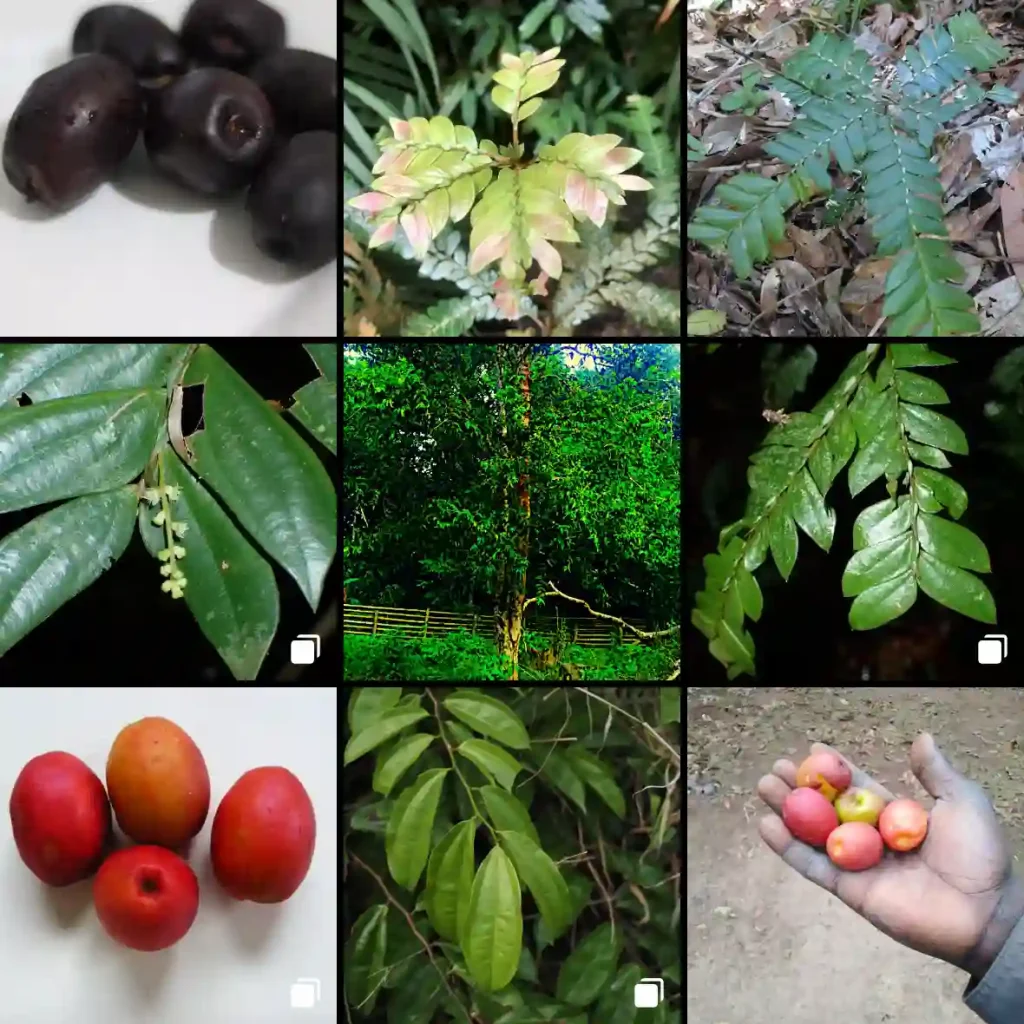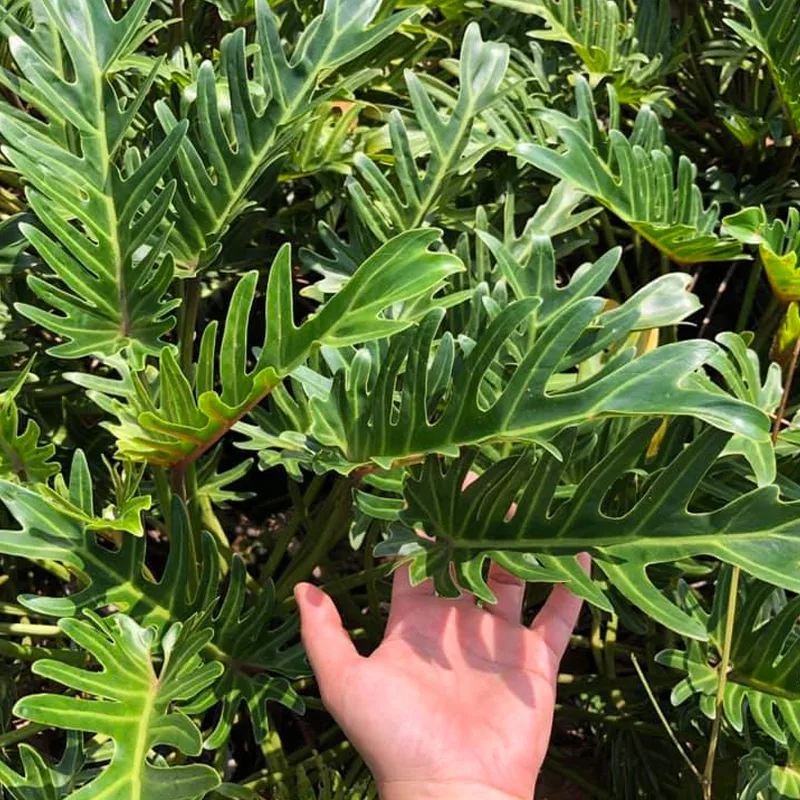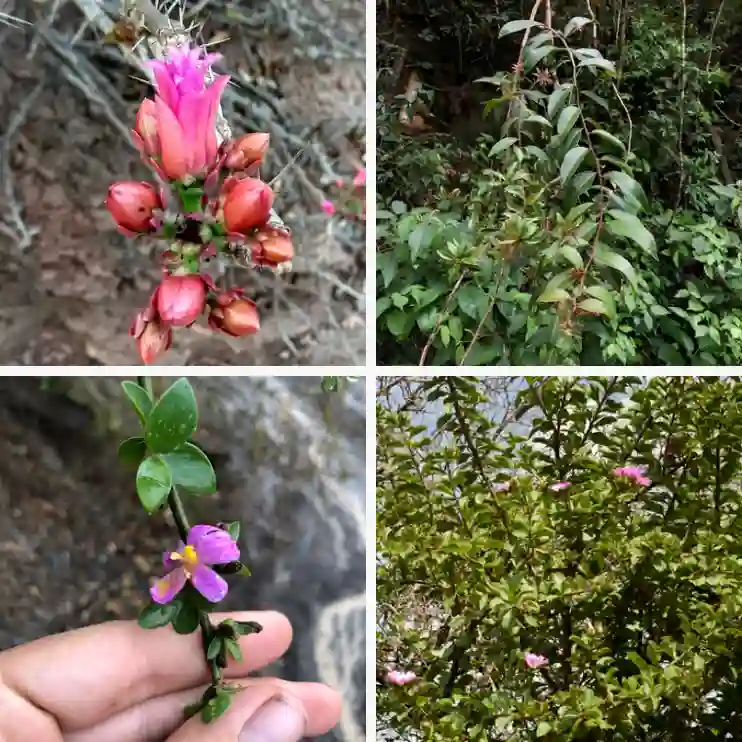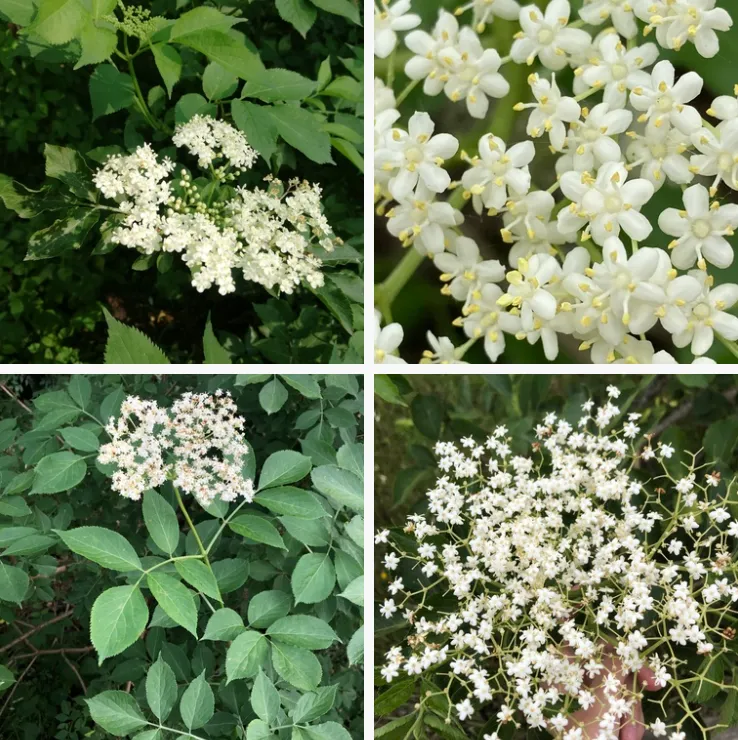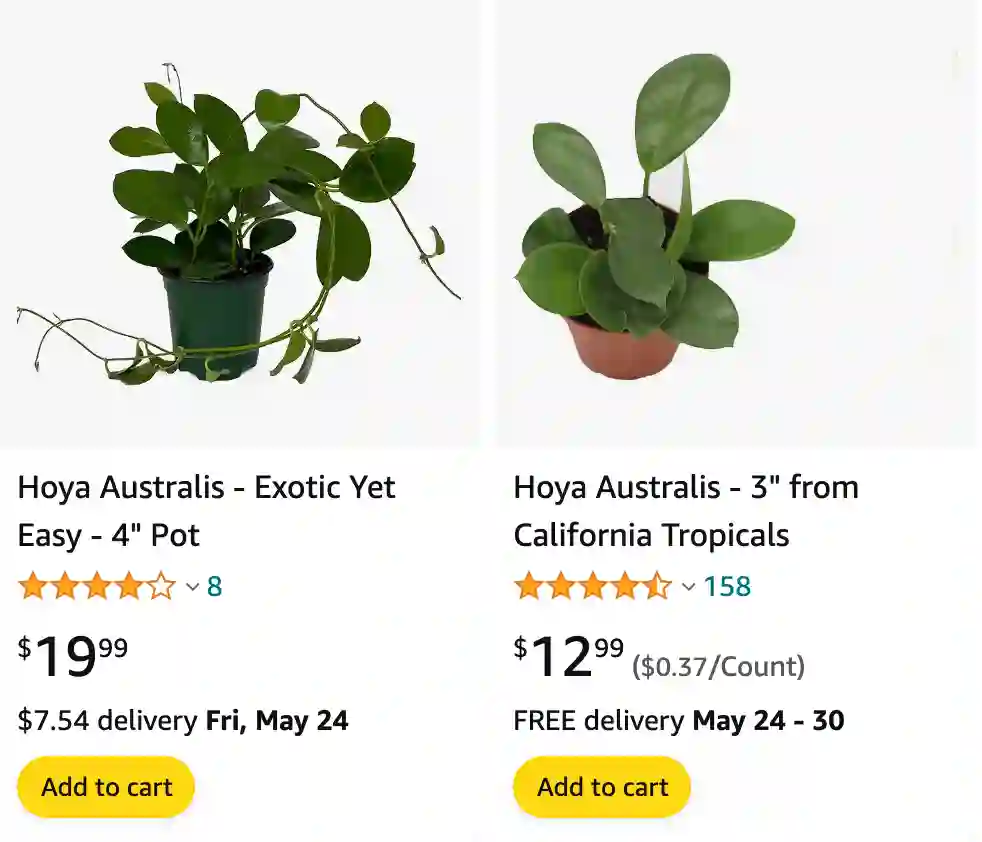
566 Species in Genus Hoya
How to care for Hoya australis?
Here’s a guide on how to care for your Hoya australis, a beautiful vining plant known for its rounded leaves and fragrant white flowers:
Light:
- Bright, indirect sunlight: Hoya australis thrives in bright, indirect light. Avoid harsh direct sun, especially during the afternoon, which can scorch the leaves. A spot 3-4 feet away from a window providing morning or filtered sunlight is ideal.
Watering:
- Water deeply when dry: Due to their succulent leaves, Hoya australis can tolerate some dryness. Water thoroughly when the top 1-2 inches of soil feel dry to the touch. Avoid letting the soil dry out completely, but also ensure it drains well to prevent root rot.
Soil:
- Well-draining potting mix: Use a well-draining potting mix specifically designed for cacti and succulents. You can also create your own mix by combining potting soil with perlite or orchid bark for extra drainage.
Fertilizing:
- Optional feeding: Hoya australis isn’t a heavy feeder. You can fertilize them monthly during spring and summer with a diluted balanced fertilizer, but it’s not essential for healthy growth.
Humidity:
- Moderate humidity is preferred: While not strictly required, Hoya australis can benefit from moderate humidity levels (around 50%). Grouping plants together, using a pebble tray with water, or running a humidifier can help increase humidity.
Temperature:
- Warm temperatures: Aim for warm temperatures between 65°F and 85°F (18°C and 30°C). Protect your plant from cold drafts and sudden temperature fluctuations.
Blooming:
- Encourage blooms: To encourage blooming, provide your Hoya australis with good air circulation and some direct morning sunlight. A slightly pot-bound root system can also stimulate flower production.
Training and Support:
- Climbing vine: Hoya australis is a vining plant in nature. You can train it to climb a moss pole, trellis, or other support structure for a more structured appearance.
Additional Tips:
- Wipe the leaves occasionally with a damp cloth to remove dust and allow better light absorption.
- Repot only when the roots outgrow the current container. Choose a pot with drainage holes slightly larger than the root ball.
- Hoya australis is generally a low-maintenance plant. With proper care, it can reward you with beautiful foliage and fragrant blooms for many years.
How to propagate Hoya australis?
Hoya australis can be propagated through stem cuttings. Here’s how to do it:
- Select a healthy stem: Choose a stem with at least two nodes and a few leaves.
- Cut the stem: Use a clean, sharp knife or scissors to cut just below a node.
- Remove lower leaves: Remove the leaves from the bottom node to make it easier to plant.
- Rooting medium: Place the cutting in water or a potting mix of perlite and peat. If using water, change it regularly to prevent stagnation.
- Maintain humidity: Covering the cutting with a plastic bag or placing it in a propagator can help maintain high humidity.
- Wait for roots: In a few weeks, roots should develop. Once they are a few inches long, transplant the cutting into a pot with well-draining soil.
Is Hoya australis toxic to cats?
Hoya australis is generally considered non-toxic to cats. While it’s always best to discourage pets from chewing on plants, this species is not known to cause serious harm if ingested. However, it’s wise to monitor your pets and consult a veterinarian if you notice any unusual behavior or symptoms.
How to make Hoya australis bloom?
To encourage Hoya australis to bloom, ensure it receives adequate light. Bright, indirect light is ideal, and a few hours of direct sunlight can promote flowering. Avoid moving the plant too frequently, as it likes to stay in one place once it’s settled. Keeping it slightly pot-bound can also encourage blooming. During the growing season, feed the plant with a high-phosphorus fertilizer to support flower development. Lastly, patience is key, as Hoyas can be slow to bloom, especially when young or recently propagated.
Is Hoya australis poisonous?
Hoya australis is not considered poisonous to humans or pets. While it is always advisable to prevent ingestion of any houseplant, this species does not contain toxins that are harmful if touched or ingested in small quantities. However, some individuals may experience mild irritation or allergic reactions, so it’s best to handle the plant with care.
Hoya Australis vs Carnosa
In terms of leaf distinctions, Hoya Carnosa boasts thick and succulent leaves, while Hoya Australis features thinner leaves. Furthermore, the two species differ in leaf shape, mature vine color, and peduncle color, presenting a comprehensive contrast between them.
Hoya Australis vs Australis Lisa
Lisa, being a Hoya australis variety, is definitely related to the plain green Australis. They share a similar growth habit, both loving to sprawl and climb. But that’s where the similarities end. The classic Australis is all about lush, emerald green foliage. Lisa, the rebel child, throws in a party of creamy yellow and green variegation. While both are beautiful Hoyas, Lisa adds a touch of whimsy to my collection.
Hoya Australis Lisa vs Krimson Princess
I adore both Hoyas, but they have distinct personalities. Hoya Krimson Princess is a drama queen, constantly throwing out stunning pink and white marbled leaves. It’s a real showstopper, but a bit fussy about watering. It throws a tantrum (wilts dramatically) if I forget to check the soil. Lisa, on the other hand, is much more chill. Her variegation leans towards creamy yellow and green, with a more relaxed vibe. She’s less demanding about moisture, making her a perfect low-maintenance beauty.
Hoya Australis Lisa vs Tricolor
Honestly, I once thought Lisa was a Tricolor in disguise! They’re both stunners with green, white, and sometimes pink variegation. But upon closer inspection, the Tricolor, which is a Hoya carnosa, has thicker, fleshier leaves. Lisa, my Hoya australis, boasts thinner, more delicate foliage. They both grow like champs, but Lisa seems to climb a bit slower, making her ideal for hanging baskets where her cascading leaves can truly shine.
If i die, water my plants!
